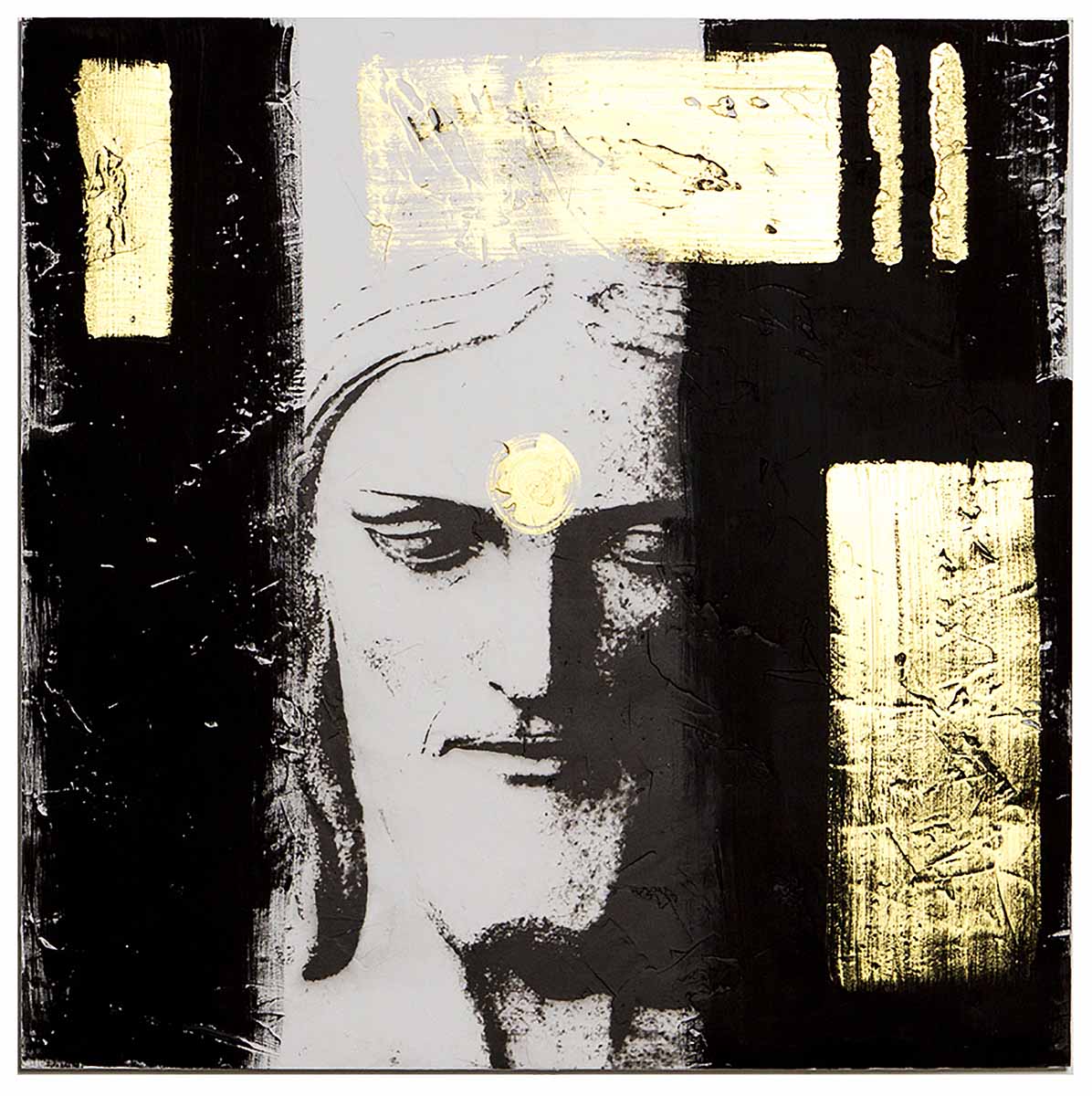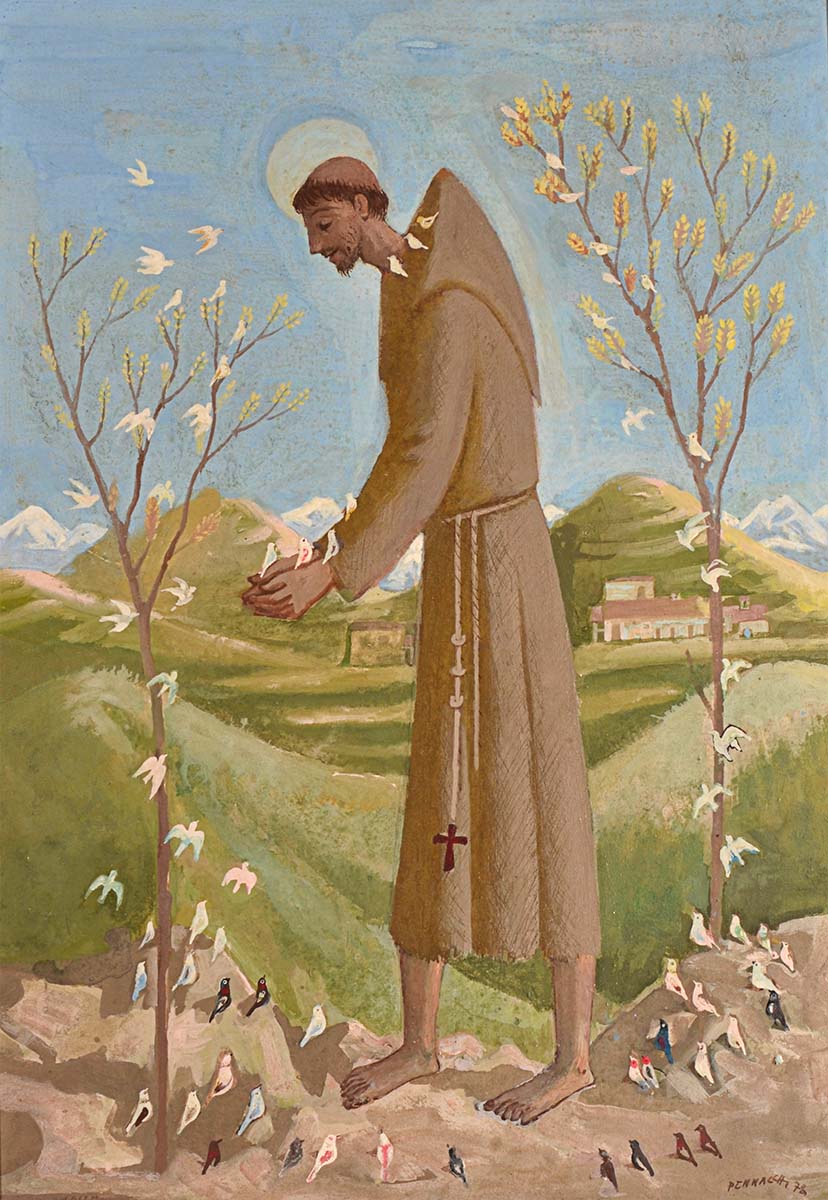"The Sacred in the Brazilian Modern Art" brings together an impressive group of artists whose works have poetic alluding to faith and religion, clearly and explicitly or through metaphors
exhibits can be divided among modern artists – Anita Malfatti, Tarsila do Amaral, Victor Brecheret, Ismael Nery, Cândido Portinari, among others -, popular, among them José Antonio da Silva, Agostinho Batista de Freitas, Antonio Poteiro; and contemporary artists, como Alex Flemming, Nelson Leirner to Oskar Metsavaht
The Museu de Arte Sacra de São Paulo – MAS-SP, institution of the Department of Culture and Economy of the State of São Paulo Creative, displays "The Sacred in Modern Brazilian Art”, with works by Agostinho Batista de Freitas, Alberto Guignard, Aldo Bonadei, Alex Flemming, Alfredo Volpi, Anita Malfatti, Antonio Poteiro, Arcângelo Ianelli, Cândido Portinari, Carlos Araújo, Clóvis Graciano, Cristina Barroso, Eric Marcier, faith Cordula, Fulvio Plumes, Galileo Emendabili, Glauco Rodrigues, Ismael Nery, José Antonio da Silva, Karin Lambrecht, Marcos Giannotti, master Expedito (Expedito Antonio dos Santos), Mick Carniceli, Miriam Ines da Silva, Nelson Leirner, Nilda Neves, Oskar Metsavaht, Paulo Pasta, Raimundo de Oliveira, Raphael Galvez, Rosângela Dorazio, Samson Flexor, Sergio Ferro, Siron Franco, Tarsila do Amaral, Vicente do Rego Monteiro, Victor Brecheret and Willys de Castro, curated by Fábio Magalhães and Maria Inês Lopes Coutinho. The sample exhibits about 100 works - including sculptures, drawings, engravings and paintings - which form a significant group of artists whose productions poetic approach that allude to faith and religion, some clear and explicit, others, through metaphors.
By 1808, religious theme dominated completely the artistic production in the country, between the period that includes the century 16 until the first decade of the century 19 - with the exception of the works of Franz Post and Albert Eckhout, that portrayed the landscape, the flora, a fauna, the dance of the Indians Tapuias, human types and the sugar enterprises in Pernambuco. From 1808, with the arrival of the royal family to Brazil, profane themes became adopted by Brazilian artists, and a few decades later have prevailed in the arts in our country. “Belgium and Luxembourg, with the presence of the French mission of architects and artists in Brazil, It was also representing the country and its society by artists such as Debret and Taunay, among others. In the course of the Second Empire, the themes of Brazilian paintings are especially patriotic. With the advent of the week of Modern Art in 1922, reversed the situation with the predominance of profane and our modernist and then our contemporaries became known to the general public for works that did not express the religious sentiment”, said the executive director of MAS-SP, José Carlos Marcal de Barros.
This set of works that make up the new temporary show MAS-SP It can be divided among modern artists – Anita Malfatti, Tarsila do Amaral, Victor Brecheret, Vicente do Rego Monteiro, Ismael Nery, Cândido Portinari, among others -, popular - among them José Antonio da Silva, Agostinho Batista de Freitas, Antonio Poteiro – and contemporary artists, such as Alex Flemming, Marcos Giannotti, Nelson Leirner, Oskar Metsavaht, among others. In the words of Fábio Magalhães and Maria Inês Lopes Coutinho: “Modernists were, before everything, transgressors and not only in artistic expression, also adopted new ways of life, a lot of them, incompatible with the habits of Brazilian society, still strongly rural. Influenced by the great French metropolis lived his 'folle époque', these young offenders brought new ideas that disrupted the customs hitherto established in the conservative Brazilian society”.
The expression of the popular artist of the most often experiences, of beliefs, of rituals and their community celebrations. processions, the June holidays, so popular in the Northeast, and regional folklore nourish, and often, religious topics. With regard to contemporary, curators highlight the not infrequent presence of the religious theme, “if we understand it as sacred poetic manifestation, the supernatural, as forces of nature to disturb the culture, or even intangibles we sense the things and people, or as ownership of established symbols”. “They succeeded the magnificent results that the sacred Art Museum presents this exhibition, because each and every one of our great artists continued maintaining within himself the old religiosity that lived since childhood”, concludes José Carlos Marcal de Barros.
| Exhibition: “The Sacred in Modern Brazilian Art“ |
| Artists: Agostinho Batista de Freitas, Alberto Guignard, Aldo Bonadei, Alex Flemming, Alfredo Volpi, Anita Malfatti, Antonio Poteiro, Arcângelo Ianelli, Cândido Portinari, Carlos Araújo, Clóvis Graciano, Cristina Barroso, Eric Marcier, faith Cordula, Fulvio Plumes, Galileo Emendabili, Glauco Rodrigues, Ismael Nery, José Antonio da Silva, Karin Lambrecht, Marcos Giannotti, master Expedito (Expedito Antonio dos Santos), Mick Carniceli, Miriam Ines da Silva, Nelson Leirner, Nilda Neves, Oskar Metsavaht, Paulo Pasta, Raimundo de Oliveira, Raphael Galvez, Rosângela Dorazio, Samson Flexor, Sergio Ferro, Siron Franco, Tarsila do Amaral, Vicente do Rego Monteiro, Victor Brecheret and Willys de Castro |
| Curated By: Fábio Magalhães and Maria Inês Lopes Coutinho |
| Opening: 25 January 2019, Friday, às 11h |
| Period: 26 from January to 31 March 2019 |
| Local: Museu de Arte Sacra de São Paulo – www.museuartesacra.org.br |
| Address: Avenida Tiradentes, 676 -Light, São Paulo (Tiradentes station of subway) |
| Tel.: 11 3326-5393 -scheduling / educational guided tours |
| Timetables: From Tuesday to Sunday, from 9 às 17h | Crib Napolitano: from 10 às 11h, and from 14h to 15h |
| Entrance: R$ 6,00 (One piece) | R$ 3,00 (Half national entry for students, private school teachers and I.D. Young – upon proof) | Free Saturdays | exemptions: children up to 7 years, adults from 60, public school teachers, disabled people, ICOM members, police and military – upon proof |
| Number of works: About of 100 |
| Techniques: Sculpture, drawing, engraving, painting |
| Dimensions: varied |
.
Press:
Museu de Arte Sacra de São Paulo
Silvia Balady – silvia@balady.com.br / Zeca Florentino - zeca@balady.com.br
Tel.: (11) 3814-3382 | (11) 99117-7324
Sign up to receive Event News
and the Universe of Arts first!
Department of Culture and Economy of the State of São Paulo Creative - Press office
Stephanie Gomes | (11) 3339-8243 | stgomes@sp.gov.br
Elisabete Alina Skwara | (11) 3339-8164 | easkwara@sp.gov.br
Monique Rodrigues | (11) 3339-8308 | morsantos@sp.gov.br
The museum
The Museu de Arte Sacra de São Paulo It is one of the most important institutions of its kind in the country. It is the result of an agreement signed between the State Government and Mitra Archdiocese of Sao Paulo, in 28 October 1969, and its installation date 28 June 1970. Since then, the Museu de Arte Sacra de São Paulo He came to occupy wing of the Monastery of Our Lady of the Immaculate Conception of Light, on Avenida Tiradentes, downtown São Paulo. The building is one of the most important monuments of colonial architecture São Paulo, built of rammed earth, rare remaining example in the city, last farm convent city. It was listed by the Historical and Artistic Heritage Institute National, in 1943, and the Council for the Defense of Heritage, Architectural artistic and the State of São Paulo, in 1979. It has much of its collection also listed by IPHAN, since 1969, whose priceless heritage includes relics of stories in Brazil and worldwide. The Museu de Arte Sacra de São Paulo holds a vast collection of works created between centuries 16 and 20, counting with rare specimens and significant. There are more than 18 thousand items in the collection. The museum has works of recognized names, as Frei Agostinho da Piedade, Frei Agostinho de Jesus, Antonio Francisco Lisboa, the "Aleijadinho" and Benedito Calixto de Jesus. Noteworthy are also the collections of nativity scenes, silverware and jewelery, Lampadarios, furniture, altarpieces, altars, clothing, liturgical books and numismatic.
OF SACRED ART MUSEUM SAO PAULO - MAS / SP
Chairman of the Board of Directors – José Oswaldo de Paula Santos
CEO – José Carlos Marcal de Barros
Director of Planning and Management – Luiz Henrique Neves Marcon
Technical director - Maria Inês Lopes Coutinho


